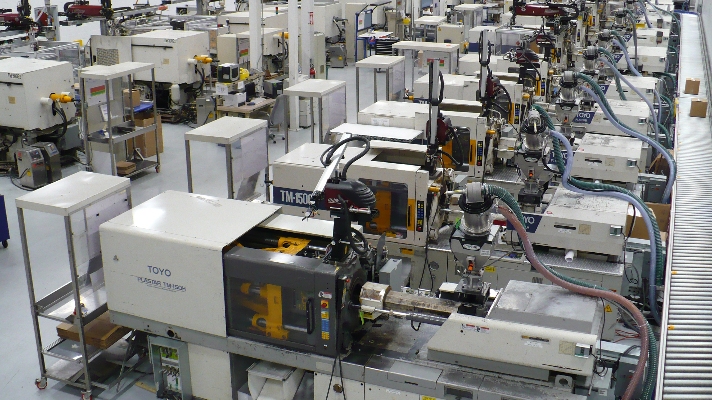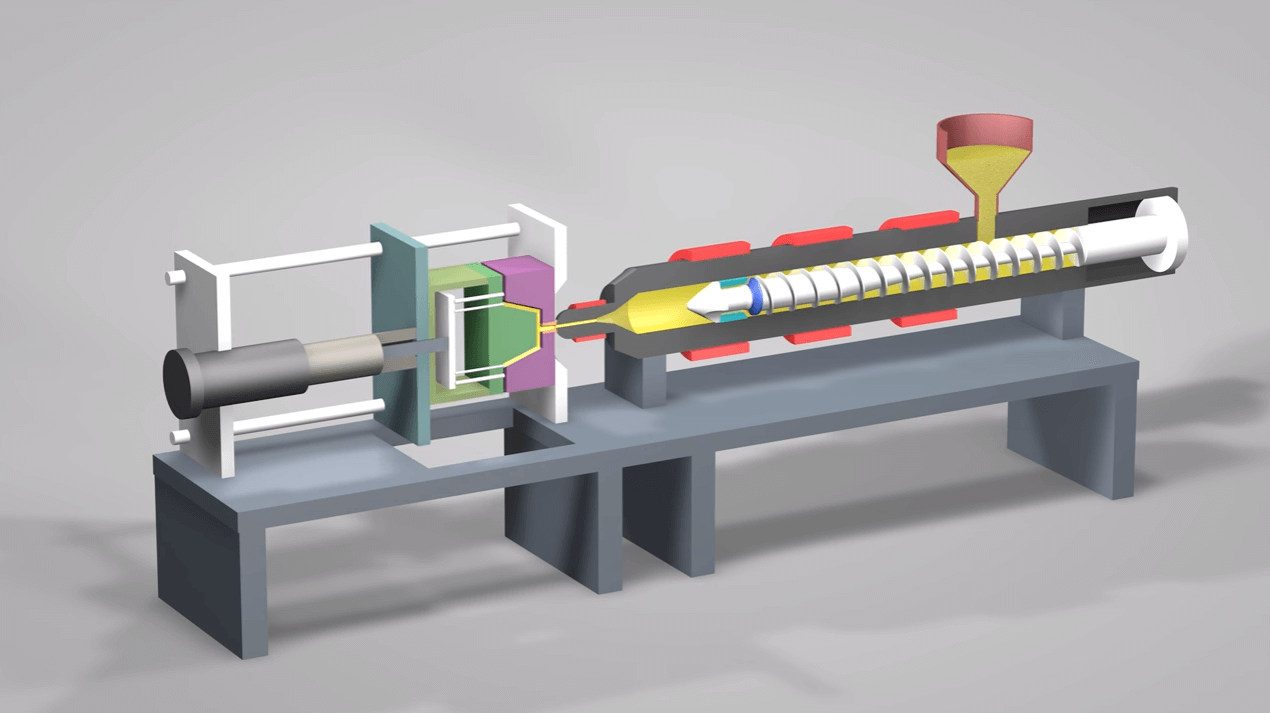Exactly How Plastic Injection Molding Ensures Consistency and Precision in Manufacturing
Understanding the Essentials of Plastic Injection Molding Processes
Plastic injection molding offers as a cornerstone of contemporary manufacturing, offering a methodical method to creating intricate components with precision. Checking out these crucial components might expose exactly how even minor changes can lead to substantial enhancements in production outcomes, elevating concerns regarding the capacity for innovation in this well-known procedure.
What Is Plastic Shot Molding?
Plastic injection molding is an extensively used manufacturing procedure that transforms thermosetting and polycarbonate products into precise and intricate forms. This method is favored for its ability to create high volumes of similar get rid of exceptional precision, making it an essential technique in different sectors, including vehicle, consumer items, and medical gadgets.
The procedure involves thawing the picked plastic product and injecting it into a mold and mildew under high stress. The mold, created to the requirements of the preferred component, permits the liquified plastic to form as it cools down and strengthens. When the material has solidified, the mold is opened, and the finished element is expelled.
Plastic injection molding provides numerous benefits, consisting of decreased waste, uniformity in production, and the capability to integrate detailed layouts that might be testing with other making techniques. In addition, it supports a wide series of materials, each offering distinct residential properties that can be customized for certain applications. As industries proceed to innovate, plastic injection molding remains at the forefront, allowing the development of sophisticated products that fulfill evolving customer needs.
The Injection Molding Process
The injection molding procedure is an innovative technique that includes several key phases to produce high-grade plastic parts. Originally, plastic pellets are fed into a warmed barrel where they are melted into a viscous liquid. This molten plastic is after that injected under high pressure right into a precision-engineered mold, which shapes the material right into the desired type.
When the mold is loaded, the plastic is permitted to strengthen and cool down, taking the shape of the mold and mildew dental caries. Cooling time is crucial, as it impacts the cycle time and the last homes of the molded part. After sufficient air conditioning, the mold opens up, and the completed component is ejected utilizing ejector pins.

Materials Used in Shot Molding
Numerous products can be made use of in the injection molding process, each offering distinct residential or commercial properties that deal with specific applications. One of the most typically utilized products consist of thermoplastics, thermosetting plastics, and elastomers.

Thermosetting plastics, like epoxy and phenolic resins, undertake a chemical change during the healing procedure, leading to a stiff, stringent framework. These products browse around this web-site are optimal for applications needing high heat resistance and architectural integrity, usually utilized in auto parts and electrical insulators.
Elastomers, consisting of silicone and rubber-based materials, give versatility and durability. Their special homes make them ideal for applications that require flexibility, such as seals and gaskets.
Additionally, specialty products like bio-based plastics and composites are acquiring grip for their ecological benefits and enhanced performance features, expanding the range of shot molding applications in numerous industries. Recognizing the residential properties of these materials is critical for selecting the ideal kind for certain tasks.
Advantages of Shot Molding
Injection molding attracts attention as a highly effective production procedure that uses many advantages for producing complex parts with accuracy. One of the most substantial advantages is the ability to produce elaborate layouts that would be challenging or impossible to attain with other techniques (Plastic Injection Molding). The process enables detailed functions and limited tolerances, making sure premium parts
Furthermore, injection molding is understood for its rapid manufacturing capacities, making it a perfect choice for high-volume manufacturing. As soon as the mold is created, components can be generated rapidly, lowering preparations and enhancing total productivity. This effectiveness not just decreases manufacturing prices however also supplies an one-upmanship in the marketplace.
The versatility of materials made use of in shot molding even more enhances its appeal. A wide variety of thermoplastics and thermosetting polymers can be used, allowing makers to select materials that ideal meet their details demands, consisting of flexibility, strength, and warm resistance.
Furthermore, the procedure minimizes waste, as excess product can often be recycled and reused. This sustainability aspect adds to a reduced ecological impact, making injection molding an accountable production option. On the whole, the advantages of injection molding make it a recommended technique for numerous markets.
Factors Impacting Product Quality
While countless variables can influence item quality in injection molding, understanding these components is critical for attaining optimum outcomes. Trick facets include material choice, processing specifications, and mold and mildew design.
Material selection plays a vital role, as different polymers exhibit distinct properties that impact flowability, toughness, and thermal security. Poor product selection can bring about flaws such as bending or incomplete filling.
Processing specifications, including temperature level, stress, and cycle time, have to be diligently managed. Variants in these setups can cause variances partly measurements and surface area coating. Excessively high temperature levels may trigger destruction of the polymer, while insufficient pressure can result in brief shots.
Mold design is just as crucial, as it identifies the circulation of the molten plastic and the cooling process. Poorly made molds might cause uneven air view it conditioning rates, leading to recurring stresses and dimensional mistakes.

Conclusion
Finally, plastic shot molding offers as a crucial manufacturing procedure that allows the effective production of premium parts. Mastery of the injection molding procedure, including the understanding of materials and the influence of various factors on item top quality, is vital for accomplishing optimal results. The advantages of this technique, such as cost-effectiveness and design flexibility, more highlight its significance throughout numerous markets, solidifying its condition as a favored choice for high-volume manufacturing.
Plastic injection molding serves as a cornerstone of modern manufacturing, supplying a methodical method to producing intricate elements with accuracy.Plastic shot molding offers numerous advantages, consisting of minimized waste, uniformity in production, and the capacity to incorporate detailed designs that might be challenging with various other making techniques (Plastic Injection Molding). As industries proceed to innovate, plastic shot molding continues to be at the leading edge, allowing the growth of advanced items that reference meet advancing consumer needs
The shot molding procedure is an advanced technique that includes several vital stages to create premium plastic parts.In conclusion, plastic shot molding offers as an essential manufacturing process that makes it possible for the effective manufacturing of high-grade elements.